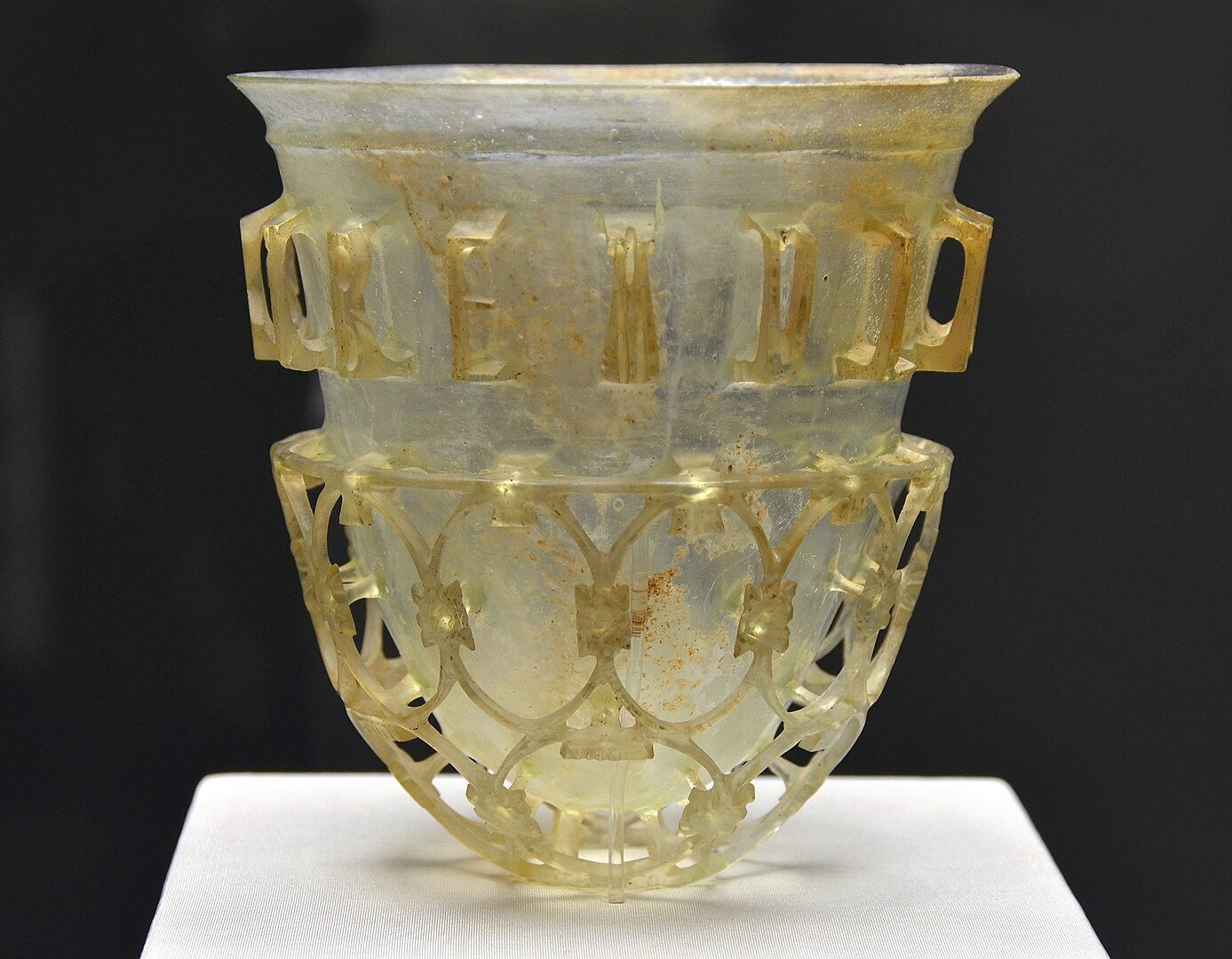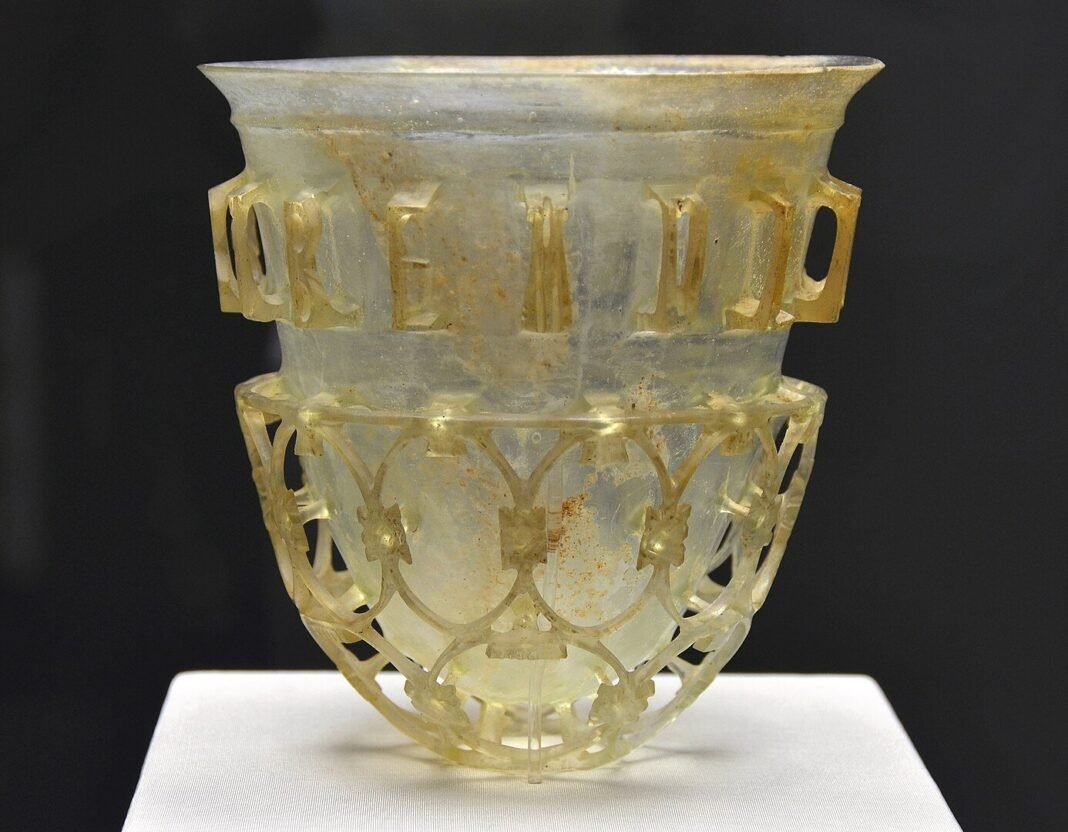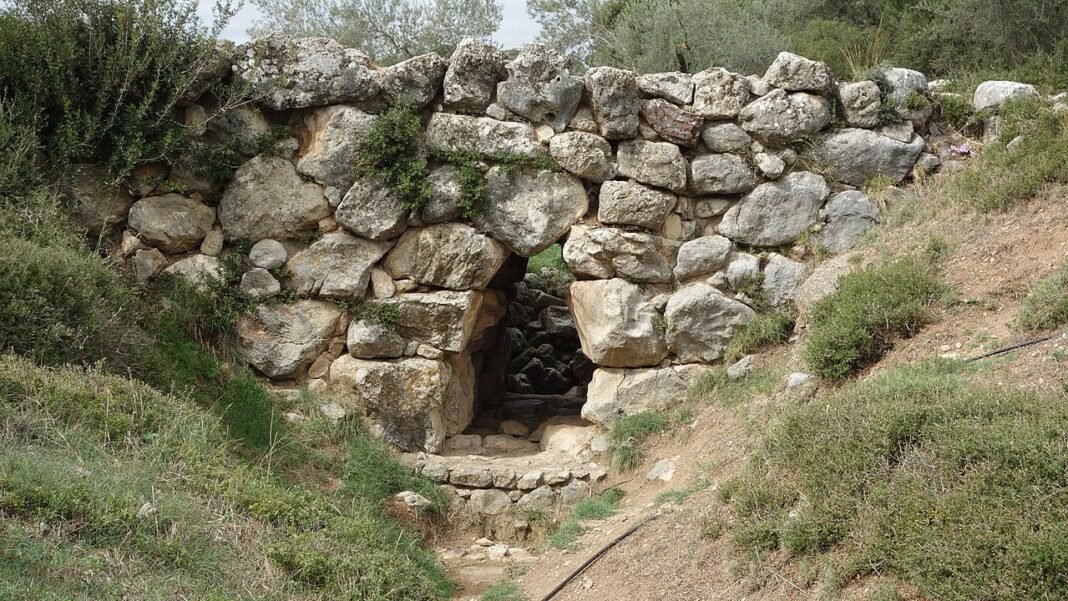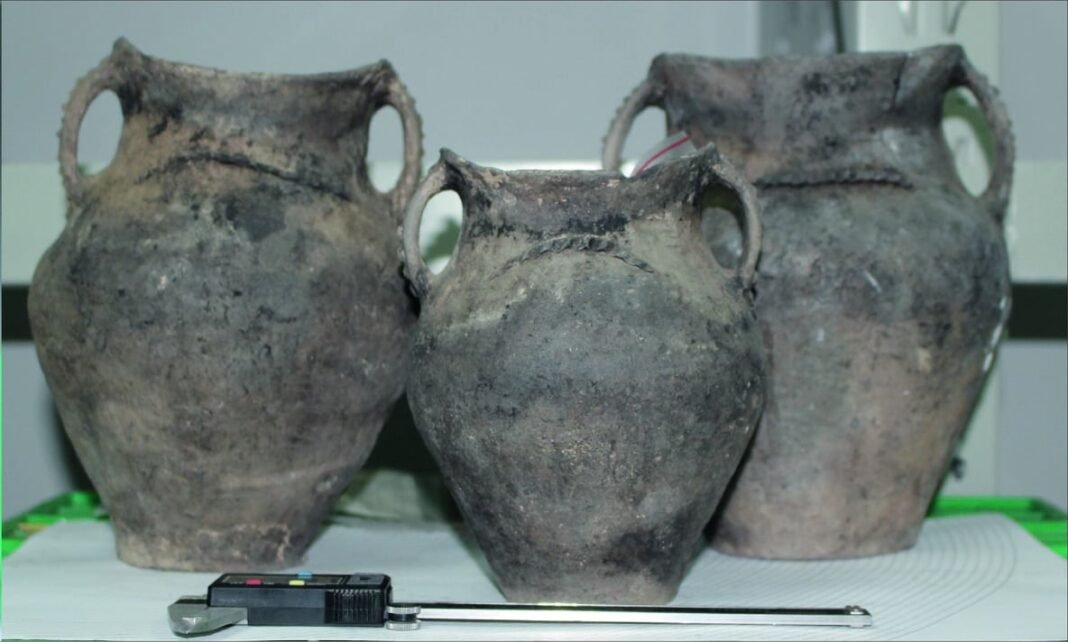
Hidden signatures carved into rare Roman glass vessels have revealed new insights into how master craftsmen worked more than 1,500 years ago. The discovery emerged during a close examination of late Roman cage cups at the Metropolitan Museum of Art in New York, where researchers identified abstract symbols previously dismissed as decoration.
Carved between 300 and 500 AD, cage cups—known as diatreta (Greek: διατρητα)—are among the most technically demanding glass objects from antiquity. Each vessel was carved from a single block of glass into two concentric layers, with a delicate outer lattice connected to the inner cup by narrow bridges. Scholars have long admired their engineering, but the recent analysis has uncovered overlooked information hidden in plain sight.
Carved symbols reinterpret the vessels’ meaning
On the reverse side of one vessel, researchers observed small openwork motifs, including diamonds, leaves, and crosses, carved beside an inscription wishing the owner a long life. For generations, these shapes were treated as decorative flourishes.
New research now suggests they serve a different purpose: they are makers’ marks, identifying the workshops that produced the vessels.
The finding shifts the understanding of diatreta from isolated masterpieces to products of organized craft networks. Rather than a single artist signing their work, the marks appear to represent collective workshop identities—similar to a studio brand used across multiple pieces.
Evidence reveals coordinated workshop teams
Further study of tool marks, unfinished fragments, and inscriptions indicates that these vessels were created by coordinated teams of specialists. Engravers, polishers, and apprentices likely shared the workload over long periods.
Fascinating world of ancient #glass: the magnificent #Roman Trivulzio cage cup, bearing a toast that reads: BIBE VIVAS MVLTIS ANNIS – Drink! May you live for many years!
Dating 4th c. AD.We don’t know how cage cups (or so-called Diatreta) were produced.
1/2#EpigraphyTuesday pic.twitter.com/Kgfth6bui1— Nina Willburger (@DrNWillburger) July 25, 2023
The precision required to carve the lattice, maintain structural stability, and polish the surfaces suggests a well-structured production process rather than individual effort.
This interpretation also helps explain the consistency of certain patterns across vessels found in different regions of the Roman Empire. The marks point to a shared visual language among glassworkers operating between the fourth and sixth centuries AD, reinforcing the idea of interconnected workshops.
New findings reshape long-standing scholarly debates
For more than 250 years, scholars have debated how Roman openwork glass was produced—whether carved by hand, cast, or blown. The newly identified makers’ marks add a layer of evidence that reorients the discussion.
Understanding the vessels now requires acknowledging not only their techniques but also the people and workshop systems behind them.
Broader research continues to uncover hidden information
The study is part of a growing body of work examining overlooked details on portable Roman objects, including inscriptions, mixed alphabets, and coded markings. These features, often dismissed in earlier scholarship, may contain information about multilingual artisans, workshop communication, or production practices.
As researchers continue to digitally document and analyze these markings, the diatreta reveal more than their celebrated craftsmanship. They now offer a clearer view of the skilled, organized, and often anonymous artisans who shaped some of the most delicate glass in the ancient world.


